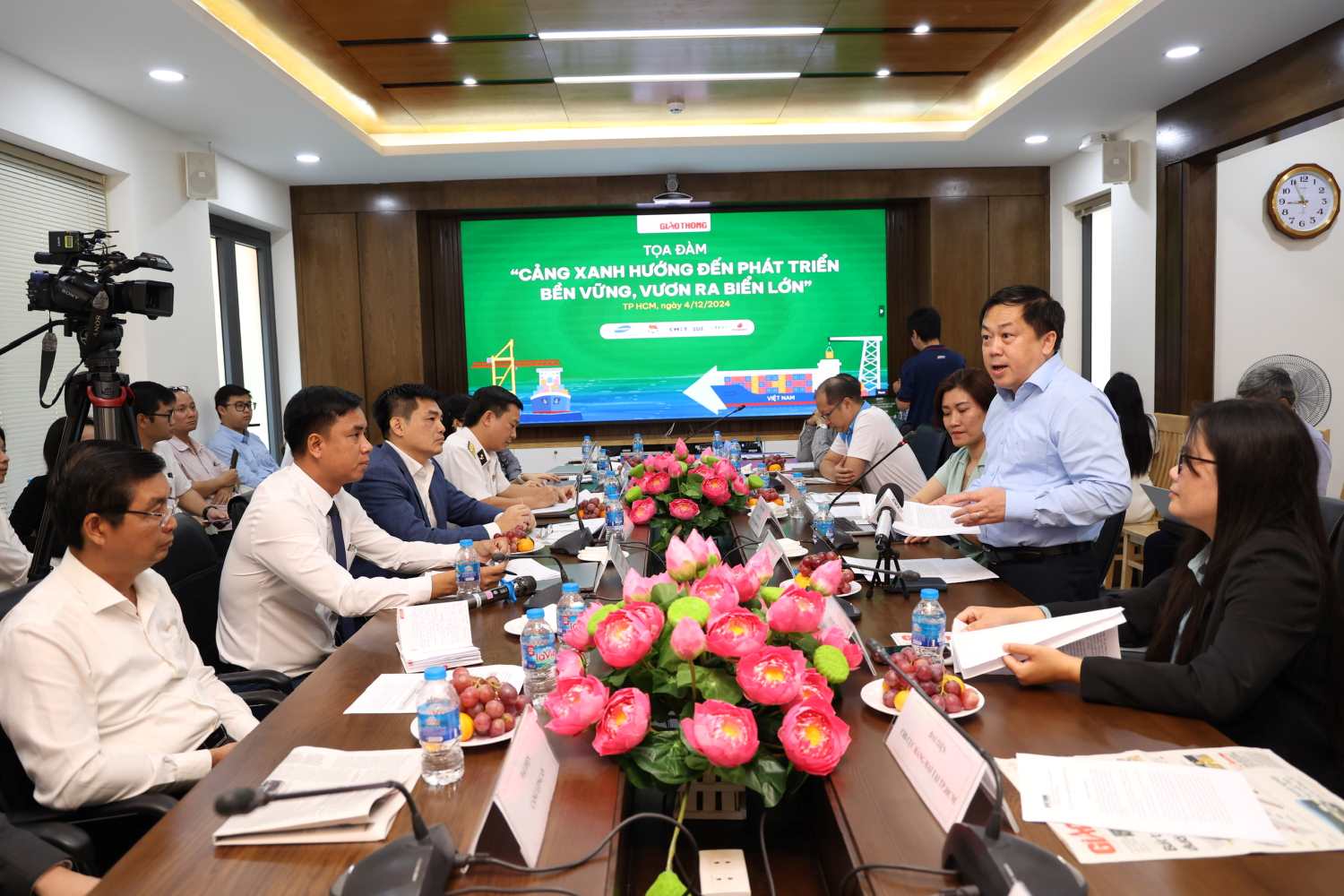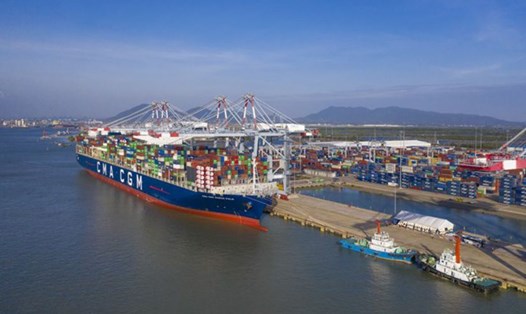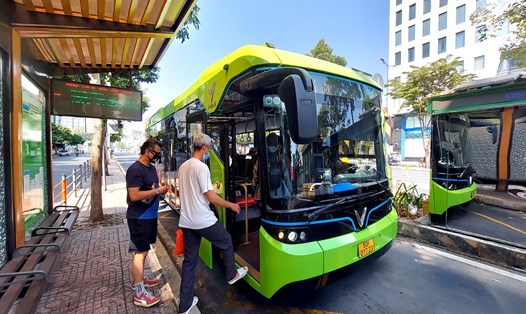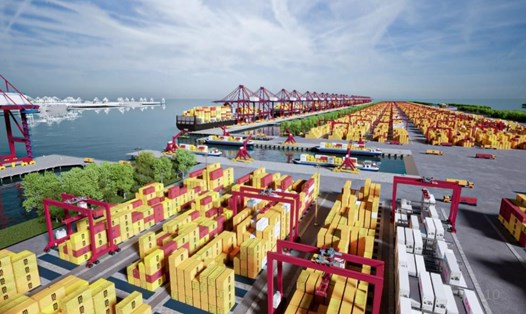These issues were raised at the seminar "Green Port - towards sustainable development, reaching out to the ocean" organized by Giao Thong Newspaper in coordination with the Vietnam Maritime Administration on December 4.
Lieutenant Colonel Vu Anh Tuan - Deputy Head of the Green Port Steering Committee, Saigon Newport Corporation (Ministry of National Defense), said that the greening process at the unit is divided into two phases.
In the first phase from 2009, Tan Cang Saigon switched from using diesel to electricity, helping to reduce operating costs from 200 billion VND to 66 billion VND per year. Improving management technology and optimizing production also brought high efficiency.
However, in the second phase, when switching to renewable energy such as solar panels, this unit encountered many difficulties. In addition, the cost of car batteries is also a major obstacle. "For a car costing 6 billion VND, the battery cost accounts for 2.8 billion VND" - Mr. Tuan said and believed that there should be large enterprises participating in large-scale battery production in Vietnam to reduce costs.
According to Mr. Tuan, a clear legal framework with mandatory standards is needed to effectively implement green ports. At the same time, preferential green credit policies and preferential capital sources need to be implemented synchronously to support businesses.
Mr. Phan Hoang Vu - Deputy General Director of SSIT port, said that the ports in Cai Mep - Thi Vai cluster are implementing green port criteria according to the plan of the Ministry of Transport. However, investing in electric vehicles or using clean energy is still a big problem because it requires abundant financial resources.
He recommended that the Ministry of Industry and Trade issue policies to encourage investment in solar energy in the form of self-production and self-consumption to reduce emissions. At the same time, it is necessary to apply tax incentives for imported equipment and technology serving green transformation at seaports.
Mr. Tran Khanh Hoang - Port & Logistics Division of ITC Corporation, emphasized that greening needs to take place synchronously throughout the supply chain. “Ports must be green, buyers also need to be green, and the transportation stage cannot be left out. Shipping lines have set a requirement that by 2030, ports must have a shore power system. If they do not meet the requirements, they will switch to other ports,” said Mr. Hoang.

Many advanced countries such as the US, China, and Singapore have joined together to establish a “green maritime belt”, connecting ports and shipping lines that meet international green standards. This is an inevitable trend to help seaports improve their competitiveness in the global market.
In Vietnam, the Vietnam Maritime Administration has issued a plan to implement the Green Port Development Project with 6 groups of criteria to assess the level of standardization. According to the roadmap, ports can participate voluntarily from now and will switch to mandatory application after 2030.
Mr. Hoang Hong Giang - Deputy Director of Vietnam Maritime Administration said that currently, out of more than 290 seaports in Vietnam, only more than 30 ports have started the green transformation roadmap.
Mr. Giang affirmed that, although difficult, this process can start with the simplest things such as optimizing loading time and arranging containers, before completely switching to clean energy.
To accelerate this process, he called for investment in clean fuel plants at ports, attracting more green ships and improving competitiveness.
“The Vietnam Maritime Administration will receive opinions from businesses and experts, and report to the Ministry of Transport to find solutions to remove difficulties and support green and sustainable development of seaports,” Mr. Giang pledged.









